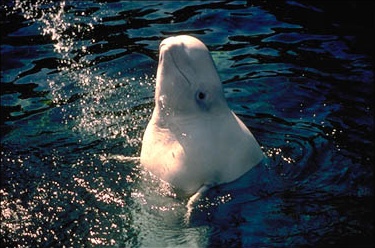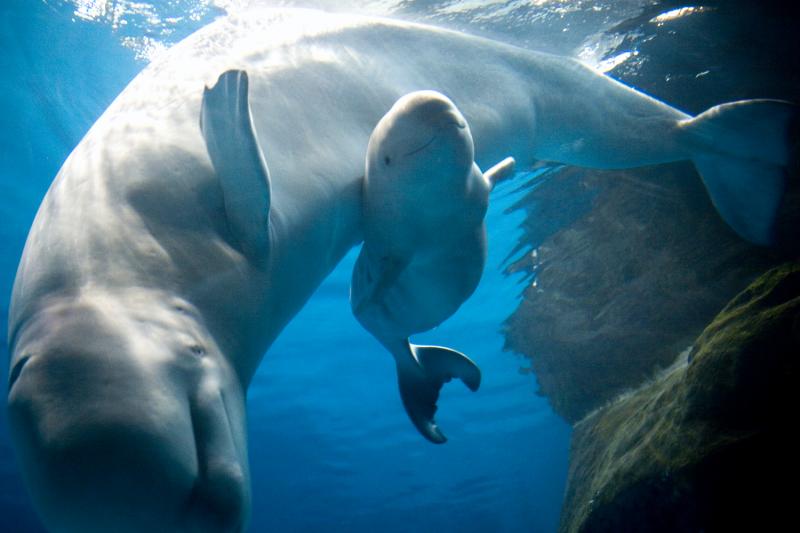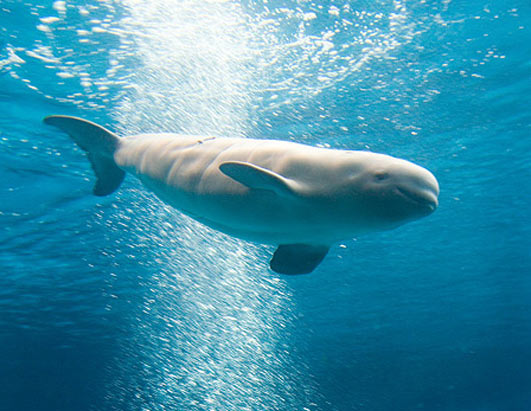- Phylum: Chordata
- Subphylum: Verterata
- Class: Mammalia
- Order: Cetacea
- Family: Monodontidae
- Species: Delphinapterus Leucas
- Beluga whales are definetly qualified to live in the arctic and sub-arctic region. Literally half of their bodies are covered with fat and surrounded by 10cm of blubber. They have excellent echo-location. Under oceans covered with ice (sometimes up to 95%), they still manage to find the surface.
|
- The Delphinapterus Leucas, commonly known as the Beluga Whale, is the only whale in its species that is completely white. Other distinguished characteristics include their lack of a dorsal fin and thinner, pointier appendages.
- Male beluga whales have a large size gap with their female partners. Males can grow up to 18 feet and weigh up 3,500lbs, compared to females at 13 feet and 2,600lbs. Who knew eating fish, cephalopods, and crustaceans had so much calories?

- During the spring, the beluga whales journeys to rivermouths, bays, or estuaries, where they will stay for summer to mate.
- Reproduction occurs about every three years throughout the year depending on location. After 12-14 monthes of gestation, the newborn calves are born. Beluga begin life gray and gradually become white. They are about 5 feet long and weigh about 180lbs.
- The calves have stong bonds with their mothers, remaining dependent for their first 2 years. Even after maturing they often return to the birth-place for a summer reunion.
|





